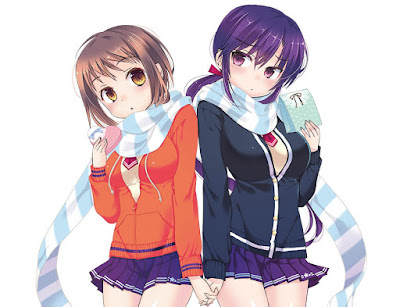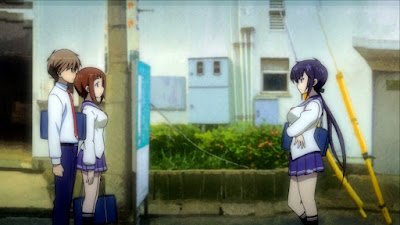Harem Anime and Manga 101
The medium of anime and manga have an eclectic variety of genres that are used to tell the story. Of the variety of genres out there, only a few of them are unique to anime and manga. One of those genres that started and remain mostly exclusive to anime and manga is the harem genre. The harem genre is one of the most criticized and one of the most loved of the anime and manga genres. A harem anime is defined as having a story which has three or more female characters that are in love with the male lead. As controversial as the genre is, it has a rich and unique history and it has quite a large following of male and female fans.
A harem series is defined as having three or more female characters that are in love with the male lead character. If there are only two female characters it is a love triangle more than a harem series. What makes this genre easy to spot is that it has a couple of telltale signs to distinguish it from a variety of other genres. The first sign is a mostly all-female cast that will likely contain one or more of these character archetypes in the cast or combined in a variety of characters:
- Tsundere
- Well-endowed female
- Childhood friend
- Token Lolita
- Rich girl
- Spacey person
- Closet nerd
- Ninja
This genre is also very popular in that it is a very malleable genre. The romance aspect through the harem genre can be center stage (Love Hina, Infinite Stratos, To Love Ru, Hayate the Combat Butler) or it can be an aspect of a grander storyline (Negima, Tenchi Muyo, Code Geass, Elfen Lied). When it is center stage it is the main driver of the storyline and it focuses more on the character dynamic between the female cast in how they try to get the love of the male lead. When it is a piece of a grander storyline it is a complimentary genre to the main one. The harem genre can be a complimentary genre to any genre: horror, drama, action, gender bending, sci-fi, steampunk, etc. When it is not on center stage a harem is created as a byproduct of the storyline, not as the main focus of the storyline.
Harem anime and manga is not new, in fact it is a fairly old and well-developed genre in the medium. The first major harem series that became very popular was Rumiko Takahashi’s Urusei Yatsura that started in 1978. She followed up with the insanely popular gender bending saga Ranma 1/2 which had a strong focus on non sequitur comedy. It was one of the rare series where the lead character had a harem of both male and female characters. Tenchi Muyo! Ryo Ohki was released as an OVA series starting in 1992, with an interesting cast and a deep cosmology. The storyline eventually developed a rich catalog of spinoffs and side stories that are still being released today. The next big twist on the harem genre was none other than the manga, Love Hina. It was released in 1998 and the subsequent anime because incredibly popular in the fan community with the rise of digisub anime. Ken Akamatsu originally wanted to create a magical series with a strong storyline, due to the popularity of Love Hina his editors would not approve of the project unless it had a harem aspect. From this Mahou Sensei Negima was created in 2003 and remains one of the most popular harem series of all time. The late 2000’s saw two series with strong harem aspects that changed the way the genre was seen forever, Code Geass and School Days. Code Geass focused on the adventures of a fallen prince and his blood soaked journey to become the emperor, pretty much the entire female cast had fallen on him at one point or another. School Days was a typical harem anime with a messed up cast and one of the most brutal endings of any anime.
The genre is enormously popular with guys, since they are the main audience. The genre is also paradoxically very popular with a female audience. It is popular because it delivers one thing that many people cannot have, which is choice. I found it interesting that to most of my friends who watch a harem series that they would normally have one or two favorite female characters in the cast. There are instances where their favorite would be similar to mine, and there are instances where their favorite character is the complete opposite of mine. The large number of characters means that there is the option of choice. Characters in the storyline become objects of wish-fulfillment fantasies.
Harem anime and manga is not without its critics. People who criticize the genre point out that there are disproportionate amounts of fanservice compared to other series out there. Another criticism is the lack of variety when it comes to character archetypes, which is why I could post the personality traits above and odds are that those personality traits are in one character or combined in a character. Due to these stock archetypes, characters in general are not that well developed in the storyline and are generally less well-developed than characters in other genres of a comparable length. The biggest criticism of the genre is that it is sexist, merely relegating the role of women as characters to fight for the affection of the male, which is counter to what is generally accepted in modern society.
As popular as the genre is, there is always one downside in a harem series. In the end of the storyline, only one character can win the lead character’s heart. If you are similar to me, odds are very high that you will watch a harem series and end up completely disappointed with who the lead character decides to further his relationship with. The harem genre is a unique genre that is not without its flaws. The large number of male and female fans is a testament to the potential quality of a harem series if done right.
Notable Harem Anime/Manga:
- Urusei Yatsura
- Negima
- Infinite Stratos
- Kampfer
- Rosario to Vampire
- Code Geass
- Sister Princess
- DearS
- Boku wa Tomodachi ga Sukunai
- Maburaho
- To Love Ru
- Omamori Himari
- Hayate the Combat Butler
- Fudanshism
- Yosuga No Sora
- Ai Yori Aoshi









Comments